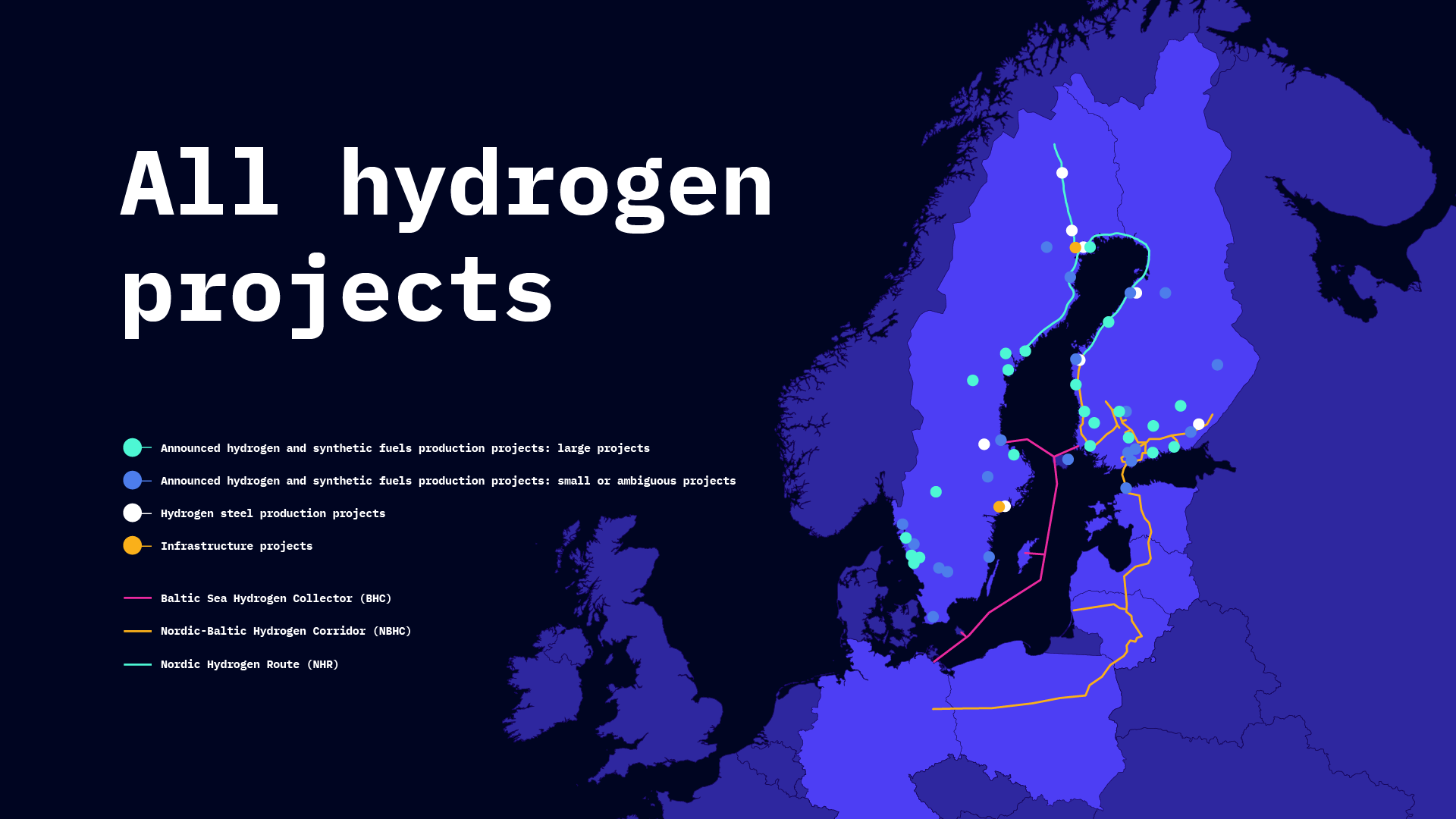Hydrogen pipelines connect Finland and Sweden to new German hydrogen pipelines
Press release from BotH2nia
Transmission system operators (TSOs) in various Baltic Sea countries are planning to run hydrogen gas pipelines from Finland and Sweden to Germany.
Gasgrid Finland, Nordion Energi, OX2 and Copenhagen Infrastructure Partners are exploring the possibility of building a hydrogen gas pipeline by 2030 connecting Finland, Sweden and Germany, crossing the Åland Islands. The Baltic Sea Hydrogen Collector (BHC) pipeline, which will run through the Baltic Sea, could also connect Gotland in Sweden and Bornholm in Denmark, where a very large amount of wind power generation is coming on stream.
Meanwhile, Elering (Estonia), Conexus Baltic Grid (Latvia), Amber Grid (Lithuania), GAZ-SYSTEM (Poland) and ONTRAS (Germany) have also signed a cooperation agreement with Gasgrid Finland to build a hydrogen infrastructure from Finland via the Baltic States and Poland to Germany.
Large hydrogen network coming to Germany
Last week, ONTRAS announced that it had also agreed with Gascade and Terranets of Germany to convert existing natural gas pipelines in Germany to transport low-carbon hydrogen from the Baltic Sea region to southern Germany by 2025. The three pipeline companies are thus creating a 1,100 km north-south hydrogen gas pipeline network in Germany from the coast to the large industrial areas of southern Germany.
The aim is to connect the hydrogen pipeline network, which will start inside Germany, to Bornholm in Denmark by 2027 and to Austria, the Czech Republic, Poland and France by 2030. In this case, hydrogen molecules produced in Sweden and Finland could in principle end up for industrial use very deep into Central Europe.
A 5000 km hydrogen pipeline network in the Baltic Sea
The Nordic-Baltic Hydrogen Corridor and Baltic Sea Hydrogen Collector projects, as well as the Nordic Hydrogen Route around the Bothnian Bay of the Baltic Sea announced earlier last spring, are now moving into the preliminary study phase, which will also explore EU funding options.
The projects could increase the total length of the Baltic Sea hydrogen network to 5,000 km, enabling the Baltic Sea region to produce 90% of the hydrogen that the EU should produce under the REPowerEU plan by the end of this decade.
Pipelines will transport large amounts of energy at low cost
When completed, the hydrogen pipeline projects will have a major impact on the development of the Baltic Sea region’s hydrogen economy. A large amount of emission-free electricity generation is being built near the planned pipeline route, based in particular on onshore and offshore wind and solar power. The hydrogen pipeline will also enable large amounts of energy to be transported relatively cheaply from electricity-producing regions to long-distance high-consumption regions, for example from Finland to Germany.
As transporting hydrogen through gas pipelines is considerably cheaper than transporting hydrogen by ship, the hydrogen pipeline gives Nordic hydrogen a competitive advantage over hydrogen produced by solar power near the equator at a lower cost.
New investments in Nordic industry
Hydrogen pipelines will ensure a continuous supply of low-cost hydrogen to industry around the Baltic Sea, which will benefit, for example, the fertiliser and oil refining industries that already use hydrogen.
The hydrogen pipeline will also ensure the continued availability of low-cost hydrogen for new industries, in particular for the production of steel and synthetic fuels. Hydrogen can already be produced in power generation sites and transported through the pipeline to, for example, forestry plants where biogenic carbon dioxide is available to be combined with hydrogen for fuel production. This will strengthen the potential for new investment in the Sweden and Finland.
Storage in Polish caves
The hydrogen pipeline will also allow hydrogen to be stored in the most suitable locations. For example, there are no underground salt caverns in Finland and Sweden that are well suited for hydrogen storage, but there are plenty in Poland. The Nordic hydrogen generated during the period of abundant production can thus be stored in Poland thanks to the pipelines and used when the cheapest electricity is less available.
Polish companies have already offered the possibility of storing hydrogen south of the Baltic Sea, but so far it has not been economically feasible.
Visa Noronen
Communications, BotH2nia Network
Originally published on 21 December.
Announcements are published as a service to readers. The sender is responsible for all content.
Announcements for publication can be submitted to [email protected].
